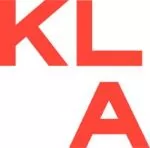- within Government and Public Sector topic(s)
- in United States
- within Accounting and Audit topic(s)
The discussion is part of a public consultation aiming to standardize diagnostics and enhance service efficiency; public contributions can be sent until October 13th
In September, the National Water and Basic Sanitation Agency (ANA) held Public Hearing No. 004/2025 to discuss the draft Reference Standard (NR) on guidelines for managing and controlling losses in potable water distribution subsystems. The initiative is part of Public Consultation No. 007/2025, open until October 13th, 2025, and seeks public contributions on the draft resolution.
The proposal responds to Brazil's high water loss rates — averaging 37.8% in 2022 and exceeding 60% in some municipalities — a situation that undermines operational efficiency, the financial sustainability of services, and water security.
Guidelines under discussion
The draft resolution requires service providers to prepare Water Loss Reduction and Control Management Plans every five years, with the possibility of annual updates, covering:
- standardized diagnosis based on SINISA, distinguishing real and apparent losses;
- progressive targets for loss reduction;
- deadlines to achieve 100% micro- and macromeasurement;
- strategies for periodic replacement of water meters;
- schedules, monitoring indicators, and cost estimates;
- use of innovative technologies such as telemetry, sensors, and georeferencing software.
Monitoring will be carried out by subnational regulatory agencies, which must publish the results. Compliance checks are scheduled to begin in 2028.
Contributions Received
The comments submitted so far emphasize key points for improving the rule:
1. Standardization of the water balance
Consensus emerged on the need to harmonize concepts and methodologies to ensure comparability among providers. Several stakeholders recommended adopting the International Water Association (IWA) model or SINISA as the basis for diagnosis.
2. Mandatory plans and coordination with other instruments
Stakeholders suggested making loss management plans mandatory, aligned with Municipal Basic Sanitation Plans and Watershed Plans. Currently, regulators only require such plans on a case-by-case basis, usually during tariff reviews or financing processes.
3. More accurate indicators
Stakeholders supported distinguishing between real (physical) and apparent (commercial) losses, using technical indicators in liters per connection/day in addition to percentages, in line with international practices and existing SINISA provisions.
4. Technology and innovation
Suggestions expanded the list of tools to be recognized under the rule, including acoustic noise sensors, leak prediction models, and smart water meters, in addition to telemetry and georeferencing software.
5. Technical definitions and new concepts
Several stakeholders requested adjustments to definitions regarding sectorization (District Metered Areas – DMAs), water balance criteria, and accounting for operational uses. They also proposed including the concept of "judicial losses" for volumes re-billed due to litigation.
6. Periodic review of plans
Stakeholders defended mandatory reviews every five years, with the possibility of annual updates to reflect improvements or corrections.
7. Monitoring and transparency
Suggestions included standardizing the presentation of results and reinforcing the obligation of periodic publication by subnational regulatory agencies.
Expected Impacts
According to the Regulatory Impact Analysis, the measure should lead to more consistent and comparable diagnoses, encourage efficiency gains, and strengthen the financial sustainability of providers. It is also expected to enhance regulatory oversight, increase transparency for users, and contribute to the preservation of water resources.
Public Consultation No. 007/2025 remains open on ANA's Social Participation System until October 13, 2025.
The content of this article is intended to provide a general guide to the subject matter. Specialist advice should be sought about your specific circumstances.



